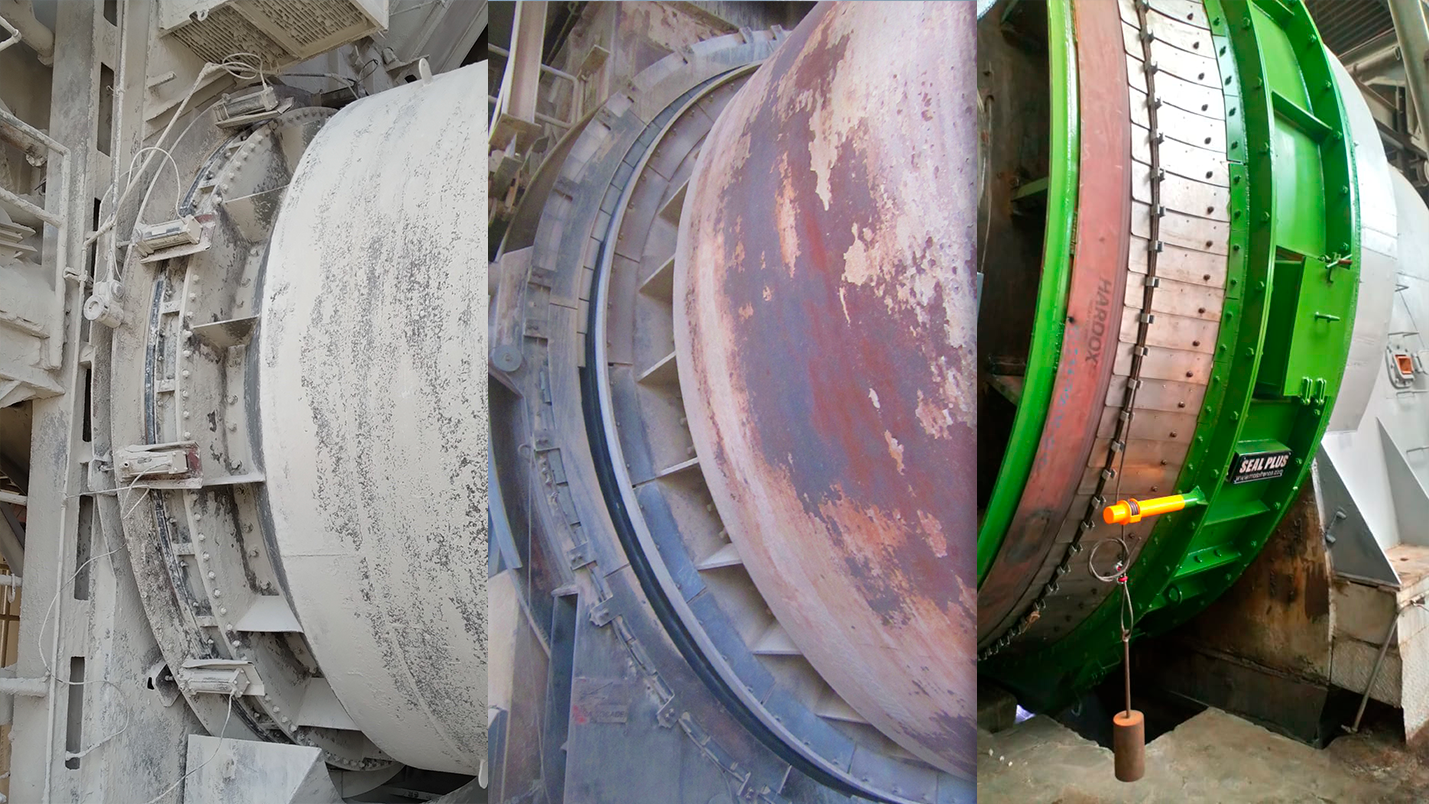In the last 30 years, the cement industry has greatly improved the production facilities and reduced heat consumption and electricity, contributing to reduce their carbon footprint. Kilns that produced around 1,000 to 2,000 t/d increased their capacity to 3,000 to 6,000 t/d. The 5-stage cyclone preheaters and pre-calciner not only improved operating conditions, but also allowed the use of low-cost alternative fuels.
False air in the kiln, preheater, pre-calciner and in the main fan remains a major problem that negatively influences production and operation costs, CO2 emissions and, in some cases, clinker quality.
False Air intake in the Kiln System
The largest false air intake takes place through the kiln inlet and outlet seals, due to the large diameter of the seal and the continuous motion of the cement rotary kiln.
False air intake can cause the following issues:
1. Increased heat consumption (the incoming cold air reduces the cement kiln temperature range in the process),
2. Increased electrical energy consumption in the draft fan due to a larger volume of gases,
3. Reduced kiln production, if the draft fan does not have a backup,
4. Flame out of control in the main burner at the main kiln due to pressure and temperature variations,
5. Impact on the protective layer and on the refractory life cycle,
6. In some kilns there was a C35, C4AF, C3A crystals variation due to alterations in the cooling area,
7. Ring formation and avalanches at the kiln inlet,
8. Loss of fine material that must be removed,
9. Cleaning and maintenance problems,
10. Accidents risks due to the material high temperature,
11. Flame out of control during pre-calcination,
12. Obstruction in the preheater cyclones,
13. Capacity loss on the draft fan (shaft),
14. Affects the stability of the process in general.
Case Studies: https://seal-plus.com/case-studies/


